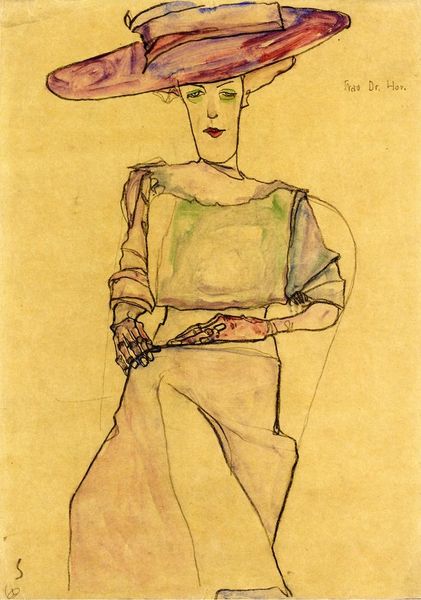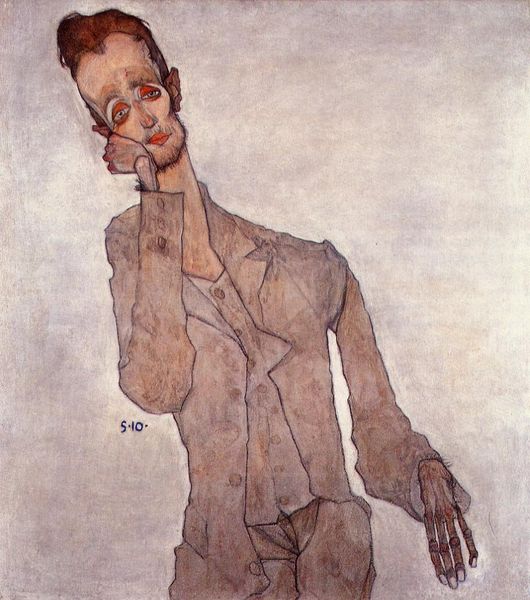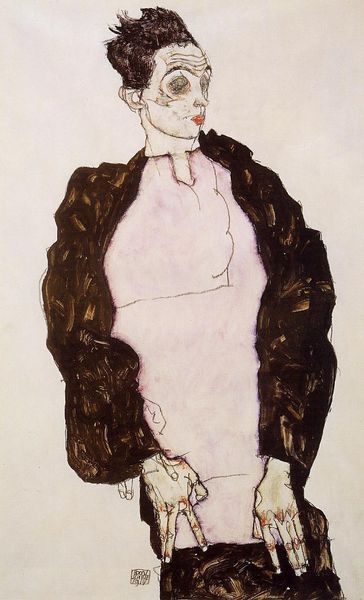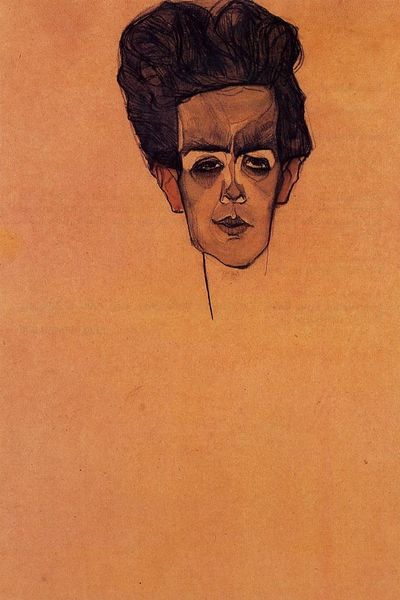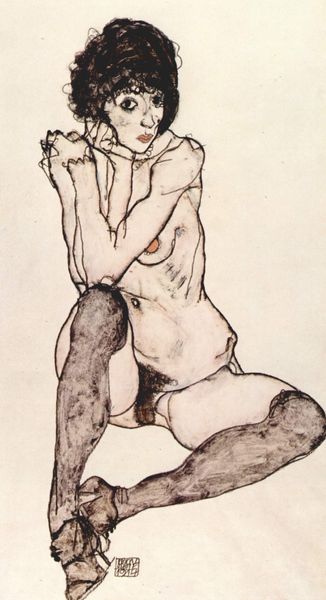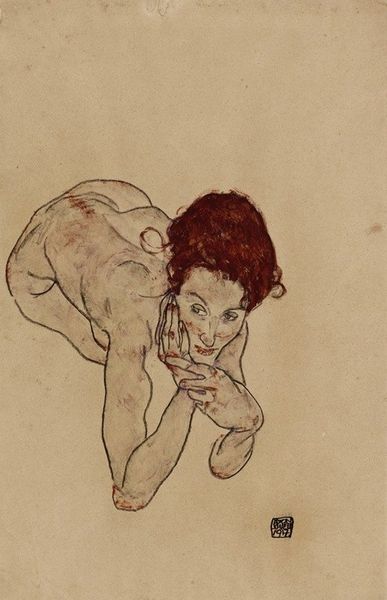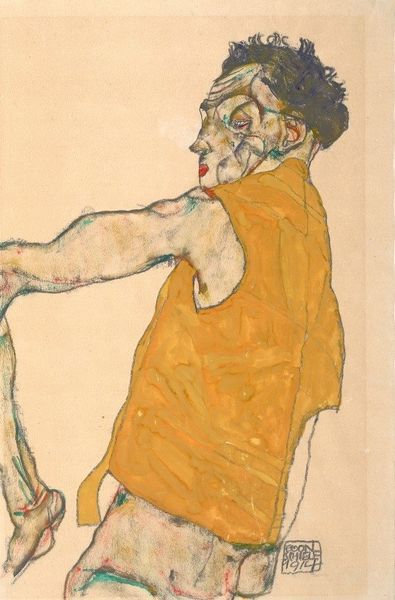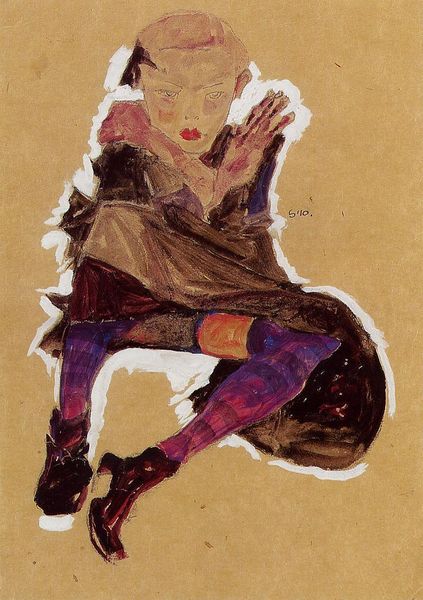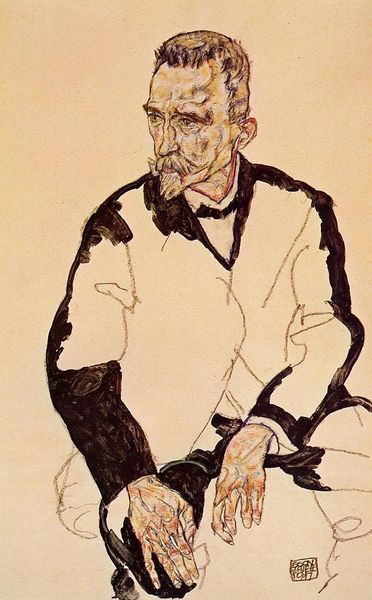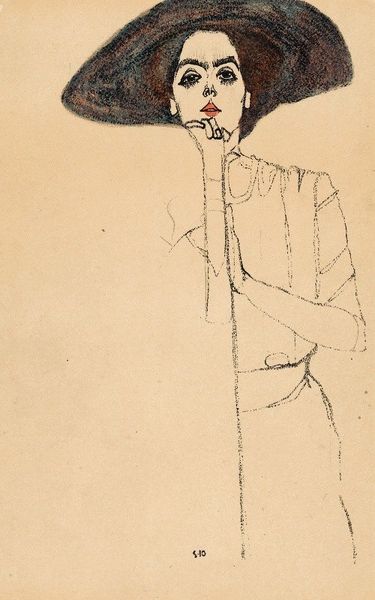
drawing, paper, pencil
#
portrait
#
drawing
#
self-portrait
#
figuration
#
paper
#
intimism
#
pencil
#
expressionism
#
line
#
portrait drawing
#
modernism
Copyright: Public domain
Editor: Here we have Egon Schiele’s "Self Portrait" from 1914, a drawing done with pencil on paper, currently held in a private collection. I find it quite unsettling, the way he’s depicted himself with such starkness, almost like a raw nerve. What do you see in this piece? Curator: The unease you describe speaks volumes. Schiele presents himself not merely as an individual, but as a vessel of raw emotion. The distorted features, the almost feverish eyes—they act as symbols of the turbulent inner life that was so central to Expressionism. Do you notice how the lines themselves seem to vibrate? Editor: Yes, the lines are so jagged and frantic; there's no softness here at all. Is that meant to convey something specific? Curator: Precisely. The harshness is deliberate. In the cultural context of early 20th century Vienna, marked by social and political anxieties, such imagery resonated deeply. Schiele’s self-portraits often explored themes of alienation, identity, and sexuality, reflecting the psychological tensions of the era. Consider the intense gaze; does it feel accusatory or vulnerable to you? Editor: I see a mix of both, actually. It’s like he’s daring you to look away, but also exposing something deeply personal. Curator: A keen observation. This duality is characteristic of Schiele's exploration of the self. His works tap into collective anxieties, transforming personal turmoil into potent cultural symbols. Think about other symbols: are there particular colour choices that speak to that? Editor: I hadn't really considered it. There’s mainly ochre, a little blue, and red. Perhaps the red highlights a kind of rawness, of exposure. Curator: Precisely! It underscores Schiele’s ability to translate the visceral into the visual, embedding layers of meaning within seemingly simple lines and hues. His ability to reflect collective unease is why the drawing remains so potent today. Editor: It's fascinating to think how a self-portrait can become a mirror reflecting wider cultural anxieties, using these artistic symbols and features as vehicles. Curator: Indeed, it compels us to reconsider how personal expression intertwines with broader cultural memory, wouldn't you agree?
Comments
No comments
Be the first to comment and join the conversation on the ultimate creative platform.
